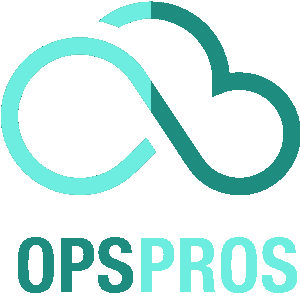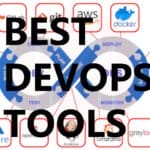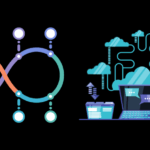What Is a Common Misconception About Agile and DevOps? Dive into the world of software development as we unravel the truth behind these widely misunderstood methodologies!

Let’s debunk some common misconceptions about Agile and DevOps methodologies 🧐
Misconception 1: Agile and DevOps are the Same Thing 😵
Key Takeaway: Agile and DevOps are complementary but different.
Agile emphasizes collaboration, flexibility, continuous project management, and product development improvement. DevOps, on the other hand, is a set of practices focused on bridging the gap between development and operations teams, improving communication, and streamlining the software delivery process. 💡
Agile methodologies like Scrum, Kanban, and XP provide an iterative and incremental development framework. At the same time, DevOps focuses on automating and optimizing the software delivery pipeline. Together, they can create a powerful synergy but are different.
Exemplify: Agile practices may help a team prioritize work and adapt to changes. In contrast, DevOps practices ensure smooth deployment and quick resolution of issues.
Pro Tip: Learn about Agile and DevOps to determine which practices best suit your team’s needs and how to combine them effectively. 🚀
Misconception 2: Agile Means No Planning or Documentation 🤔
Key Takeaway: Agile values working solutions over comprehensive documentation but doesn’t mean any planning or documentation.
A common myth is that Agile teams must plan or document their work. The opposite is true. Agile emphasizes creating just enough documentation and planning to support the development process. 📝
Agile teams use user stories, backlog grooming, and sprint planning tools to manage their work effectively. Documentation is created as needed, with the primary goal of providing value to the customer.
Exemplify: An Agile team might create a high-level roadmap to guide development efforts but avoid excessive documentation that doesn’t contribute to delivering a functional product.
Pro Tip: Focus on creating “living” documentation that evolves with the project and is easy to update and maintain. 🌱
Misconception 3: DevOps is Just About Tools and Automation 🛠️
Key Takeaway: DevOps is a culture shift that includes tools and automation but is primarily about collaboration and communication.
While tools and automation are essential components of DevOps, they’re only part of the story. DevOps is a cultural shift emphasizing collaboration between development and operations teams, shared responsibility for delivering high-quality software, and continuous learning and improvement. 💼
DevOps teams can break down silos, address bottlenecks, and improve the software delivery process by fostering a culture of open communication, shared goals, and collaboration.
Exemplify: A DevOps team might use tools like Jenkins, Docker, and Kubernetes but also focuses on practices like daily stand-ups, blameless postmortems, and cross-team pairing.
Pro Tip: Build a strong DevOps culture, choose the right tools, and automate processes. 🏗️
Misconception 4: Agile and DevOps Only Benefit Software Development Teams 💻
Key Takeaway: Various industries and roles can benefit from agile and DevOps principles.
While Agile and DevOps originated in the software development world, their principles and practices can benefit teams in various industries and roles. By focusing on collaboration, adaptability, and continuous improvement, Agile and DevOps can help organizations become more efficient, flexible, and responsive to change, regardless of their specific field. 🌐
For example, marketing teams can use Agile methodologies to prioritize campaigns, iterate on messaging, and quickly respond to market trends. Similarly, DevOps practices can help IT teams outside of software development improve communication, streamline processes, and reduce downtime.
Exemplify: A manufacturing company might adopt Agile to quickly adapt production plans in response to changing demand. At the same time, a customer support team could implement DevOps practices to enhance cross-team collaboration and problem-solving.
Pro Tip: Be bold and experiment with Agile and DevOps principles in non-software contexts. You might be surprised at the benefits you can achieve! 🎯
Misconception 5: Agile and DevOps Guarantee Success 🏆
Key Takeaway: Agile and DevOps are robust methodologies, but success depends on practical implementation and team commitment.
While Agile and DevOps offer many advantages, they aren’t a one-size-fits-all solution or a guarantee of success. Effective implementation and genuine commitment from the entire team are crucial for realizing their full potential. 🤝
Mere adoption of Agile or DevOps practices is needed. Teams must embrace the underlying principles, continuously learn from their experiences, and refine their approach to address unique challenges and opportunities.
Exemplify: A team that merely goes through the motions of Scrum ceremonies without truly embracing Agile principles is unlikely to see significant improvements in productivity or customer satisfaction.
Pro Tip: Focus on fostering a culture of continuous improvement, learning, and adaptation rather than simply following Agile or DevOps practices by the book. 📚
Misconception 6: Agile Requires Constant Change 😨
Key Takeaway: Agile promotes adaptability but doesn’t mean constant, disruptive changes.
Agile methodologies encourage teams to adapt to new information and changing circumstances. However, Agile teams can always be in a state of flux. Agile promotes regular evaluation and adaptation, not chaos. 🔄
Teams should prioritize and plan work based on customer needs and feedback while balancing stability and responsiveness.
Exemplify: Agile teams may introduce changes in response to customer feedback but maintain a stable product backlog and well-defined sprint goals.
Pro Tip: Embrace change, but avoid constant disruption by setting clear priorities and balancing adaptability and stability. ⚖️
Misconception 7: DevOps Equals NoOps 🚫
Key Takeaway: DevOps doesn’t eliminate the need for operations but promotes a more collaborative, efficient approach.
Some believe that DevOps aims to replace traditional operations roles with automation, leading to a “NoOps” environment. Misconceptions like this exist.DevOps focuses on improving collaboration between development and operations teams, not making operations obsolete. 🤖
In a DevOps culture, operations professionals work closely with developers, sharing knowledge, tools, and practices to optimize the software delivery process.
Exemplify: A DevOps team may automate infrastructure provisioning, but operations professionals still play a crucial role in monitoring, scaling, and maintaining the systems.
Pro Tip: Encourage cross-functional collaboration and knowledge sharing to create a more effective, efficient, and resilient software delivery process. 🌉
Misconception 8: Agile and DevOps are Only for Startups and Small Teams 🏢
Key Takeaway: The benefits of Agile and DevOps extend across all sizes of organizations and teams.
It’s a common belief that Agile and DevOps are best suited for startups and small teams. However, these methodologies can be scaled and adapted to organizations of all sizes, including large enterprises. 🌍
Large enterprises can become more responsive, innovative, and customer-centric by implementing Agile and DevOps practices at the team level and scaling them across the organization.
Exemplify: A large organization might use the Scaled Agile Framework (SAFe) to coordinate Agile practices across multiple teams while adopting a multi-team DevOps approach to managing a complex software delivery process.
Pro Tip: Investigate scaling frameworks and strategies to help your organization adopt Agile and DevOps practices at the enterprise level. 📈
Misconception 9: Agile and DevOps Discourage Specialization 🎓
Key Takeaway: Agile and DevOps encourage cross-functional collaboration but must eliminate the need for specialized skills.
Some think Agile and DevOps discourage specialization, expecting team members to become generalists. While cross-functional collaboration is essential, specialized skills remain valuable. 🔧
Agile and DevOps teams benefit from members with diverse skill sets who can contribute their expertise while collaborating and learning from each other.
Exemplify: An Agile team might include a UX designer, a front-end developer, and a back-end developer, each contributing their unique expertise while working together on shared goals.
Pro Tip: Foster a culture of continuous learning and collaboration, allowing team members to share their specialized knowledge while gaining a broader understanding of the project. 🧩
Misconception 10: DevOps is Just About Speed 🏎️
Key Takeaway: DevOps is about improving collaboration, quality, and efficiency, not just speeding up delivery.
With my 19 years of experience, I’ve seen many believe that DevOps focuses solely on delivering software faster. While speed is crucial, DevOps is also about improving collaboration, quality, and efficiency throughout the software delivery 🎯
A successful DevOps implementation should balance speed with stability, reliability, and security.
Exemplify: DevOps teams might use Continuous Integration and Continuous Delivery (CI/CD) pipelines to deploy faster and implement rigorous testing, monitoring, and feedback loops to ensure quality.
Pro Tip: Focus on all aspects of the software delivery process, including quality, security, and collaboration, to achieve a well-rounded DevOps implementation. 🌐
Misconception 11: Agile Teams Don’t Need Managers 👩💼
Key Takeaway: Agile teams still need leadership, but the role of a manager evolves to support team autonomy and decision-making.
Some people think that Agile teams don’t require managers. While Agile emphasizes self-organizing teams, the need for leadership and management remains. Instead, the role of a manager in an Agile environment evolves to support the team’s autonomy and decision-making. 🧭
Managers in Agile teams often act as servant leaders, focusing on removing obstacles, providing resources, and empowering their teams to make decisions.
Exemplify: An Agile manager might facilitate sprint planning, address team impediments, and mentor team members rather than micromanage tasks and deadlines.
Pro Tip: Embrace the servant-leader mindset as an Agile manager, focusing on empowering, supporting, and enabling your team’s success. 👥
Misconception 12: DevOps Requires a Dedicated Team 🚧
Key Takeaway: DevOps is about breaking down silos and fostering collaboration, not creating a separate team.
A common misconception is that adopting DevOps requires a dedicated DevOps team. However, the essence of DevOps lies in breaking down silos and fostering cross-functional collaboration, not creating a separate team. 🤲
Organizations should focus on embedding DevOps practices and culture within their existing development and operations teams rather than segregating them into a new teams.
Exemplify: A company might integrate operations engineers into development teams and encourage developers to participate in operations tasks, fostering a shared understanding and collaboration.
Pro Tip: Cultivate a DevOps mindset across your organization, encouraging collaboration, knowledge sharing, and shared responsibility among development and operations teams. 🌉
Expert Quotes on Common Misconceptions in Agile and DevOps 🗣️
Here are three insightful quotes from experts in Agile and DevOps that address common misconceptions and provide valuable perspectives on these methodologies:
Gene Kim, co-author of “The DevOps Handbook” and “The Phoenix Project.”
“DevOps isn’t just about automation or technology or process. It’s also about culture, and not just culture as a buzzword, but culture in terms of how do we really create a high-trust environment where we can learn from our mistakes and constantly improve.” 💡
This quote highlights the importance of culture in DevOps, emphasizing that it’s not just about tools and processes but also about fostering a supportive environment for continuous learning and improvement.
Jeff Sutherland, co-creator of Scrum and author of “Scrum: The Art of Doing Twice the Work in Half the Time.”
“Scrum is not a process or a technique for building products; it is a framework within which you can employ various processes and techniques. Scrum makes clear the relative efficacy of your product management and development practices so that you can improve.” 🌟
Sutherland’s quote clarifies that Scrum, as an Agile framework, is not prescriptive but provides a structure within which teams can adapt their practices and processes, encouraging continuous improvement.
Jez Humble, co-author of “Continuous Delivery” and “The DevOps Handbook.”
“The goal of Continuous Delivery is to make deployments—whether of a large-scale distributed system, a complex production environment, an embedded system, or an app—predictable, routine affairs that can be performed on demand.” 🎯
This quote by Jez Humble addresses the misconception that DevOps and Agile lack predictability. By emphasizing the goals of Continuous delivery—a core practice in DevOps—, he demonstrates that these methodologies aim to make software deployments reliable and consistent.
Frequently Asked Questions (FAQs)❓
How can we measure the success of our DevOps implementation?
Monitoring critical metrics like deployment frequency, change lead time, change failure rate, and mean time to recovery (MTTR) can help measure success. Regularly assessing these metrics helps identify areas for improvement.
How do we maintain security in a fast-paced DevOps environment?
Integrating security practices into the development and deployment pipeline (DevSecOps) ensures that security is considered at every stage. Automated security tests, vulnerability scans, and regular training can help maintain security standards.
How do we manage technical debt in an Agile environment?
Regularly allocate sprint time for refactoring, addressing known issues, and improving code quality. Maintaining a backlog of technical debt items helps teams identify potential problems and prioritize their resolution.
What is the role of a Product Owner in an Agile team?
The product owner defines the backlog, gathers requirements, and ensures teamwork meets customer expectations.
How can we scale Agile and DevOps practices in a large organization?
Scaling frameworks like the Scaled Agile Framework (SAFe), Large-Scale Scrum (LeSS), or Disciplined Agile Delivery (DAD) guide scaling Agile practices across multiple teams. Encourage cross-team collaboration, shared tooling, and a consistent approach to DevOps practices for successful scaling.
Is there a best practice for managing dependencies between Agile teams?
Create a shared understanding of dependencies by visualizing them using tools like dependency maps or program boards. Regularly communicate and coordinate between teams to address dependencies, and consider allocating dedicated time for cross-team collaboration.
How can we integrate legacy systems into our DevOps pipeline?
Identify and isolate the parts of the legacy system that can be modernized or refactored to work with your DevOps pipeline. Implement automated testing, monitoring, and deployment practices for the legacy system, gradually updating it.
How do we ensure that Agile teams maintain a sustainable pace?
A sustainable pace is achieved by avoiding overcommitment, setting realistic sprint goals, and tracking team capacity. Encourage a healthy work-life balance and regularly review team workload and velocity to adjust planning accordingly.
What is the role of a Scrum Master in an Agile team?
The Scrum Master is a servant leader who supports the team by facilitating Agile ceremonies, coaching team members on Agile practices, and removing impediments to team progress.
How can we effectively manage distributed Agile and DevOps teams?
Communication, collaboration, and transparency are vital to managing distributed teams. Utilize collaboration tools, establish a shared understanding of goals and priorities, and maintain regular contact through meetings and status updates.
How can we drive cultural change to support Agile and DevOps adoption?
Promote a culture of experimentation, learning, and collaboration by encouraging open communication, providing training, and recognizing team achievements. Empower teams to make decisions and adapt processes, fostering a mindset of continuous improvement.
Is Agile only suitable for small teams and projects?
Agile is adaptable and can be successfully implemented in projects of various sizes. Scaling frameworks like the Scaled Agile Framework (SAFe), Large-Scale Scrum (LeSS), and Disciplined Agile Delivery (DAD) guide the implementation of Agile practices in larger organizations.
Does DevOps only apply to development and operations teams?
While DevOps originated from the need to improve collaboration between development and operations teams, its principles and practices can be extended to other areas, such as security (DevSecOps) and quality assurance, fostering a collaborative culture across the entire organization.
Are Agile and DevOps interchangeable terms?
Agile and DevOps are related but distinct concepts. Iterative software development is based on agile principles and frameworks. At the same time, DevOps is a culture and set of practices that bridge the gap between software development and operations teams, promoting collaboration and automation.
Do Agile teams ignore documentation?
Agile teams prioritize working software over comprehensive documentation. However, they still recognize the importance of creating and maintaining valuable, up-to-date documentation that supports the development process and product maintenance.
Can we only practice DevOps if we use specific tools?
DevOps is more about culture, collaboration, and process than specific tools. While many tools support DevOps practices, the key is to choose the right combination of tools that best fit your organization’s needs and enable seamless collaboration and automation.
Do Agile teams need to have planning or predictability?
Agile teams plan iteratively and continuously, adapting their plans based on feedback and changing circumstances. Flexibility and responsiveness are provided, but planning and goal-setting must be eliminated.
Is DevOps just for startups and tech companies?
DevOps principles and practices can be applied in various industries and organizations. The focus on collaboration, automation, and continuous improvement can benefit any organization looking to enhance its software delivery capabilities.
Can we adopt Agile without changing our organizational structure?
Agile adoption often requires changes in organizational structure to support cross-functional, self-organizing teams. However, the extent of these changes depends on the organization’s existing system and the specific Agile framework being adopted.
Does implementing DevOps require a dedicated team?
DevOps fosters collaboration and breaks down silos between development and operations teams, not creating a separate team. Successful DevOps implementations involve embedding DevOps practices and culture within existing teams rather than segregating them into a new teams.
Do Agile teams have no deadlines or timeframes?
Agile teams work within timeboxes, such as sprints or iterations, and are committed to delivering working software within those timeframes. Agile does not eliminate deadlines but encourages a more flexible approach to planning and adapting to changing requirements.
Is DevOps only about automating processes?
Automation is an essential aspect of DevOps but not the sole focus. DevOps also emphasizes collaboration, shared responsibility, and continuous improvement to enhance the entire software delivery lifecycle.
Conclusion: Debunking Agile and DevOps Misconceptions 💡
By debunking these common misconceptions about Agile and DevOps, we hope to understand their true nature and a potential better. Embracing Agile and DevOps principles can significantly improve collaboration, efficiency, and adaptability. Still, their success depends on practical implementation, team commitment, and continuous learning.
Remember, Agile and DevOps are not silver bullets. However, with the right mindset and dedication, they can provide a strong foundation for teams seeking to excel in today’s fast-paced, ever-changing landscape.
Happy debunking! ✨
References 📚
The following resources provide valuable insights and guidance on Agile and DevOps methodologies.
Continuous Delivery: Reliable Software Releases through Build, Test, and Deployment Automation by Jez Humble and David Farley (2010)
This seminal book introduces the concept of Continuous Delivery, a cornerstone of the DevOps movement. 📖
The DevOps Handbook: How to Create World-Class Agility, Reliability, and Security in Technology Organizations by Gene Kim, Jez Humble, Patrick Debois, and John Willis (2016)
A comprehensive guide to implementing DevOps principles and practices in organizations of all sizes. 📗
Accelerate: The Science of Lean Software and DevOps: Building and Scaling High Performing Technology Organizations by Nicole Forsgren, Jez Humble, and Gene Kim (2018)
This book presents research findings on the impact of DevOps practices on software delivery performance and organizational outcomes. 📘
The Phoenix Project: A Novel about IT, DevOps, and Helping Your Business Win by Gene Kim, Kevin Behr, and George Spafford (2013)
A novel that provides insights into the challenges and opportunities of implementing DevOps in a relatable, engaging format. 📕
Scrum: The Art of Doing Twice the Work in Half the Time by Jeff Sutherland and J.J. Sutherland (2014)
A practical guide to implementing Scrum, a popular Agile framework, written by one of its co-creators. 📙
The Lean Startup: How Today’s Entrepreneurs Use Continuous Innovation to Create Radically Successful Businesses by Eric Ries (2011)
This book explores the Lean Startup methodology, which shares many principles with Agile and DevOps, focusing on continuous innovation and learning. 📔
Agile Estimating and Planning by Mike Cohn (2005) –
A comprehensive guide to Agile estimation and planning techniques, providing practical advice for Agile practitioners. 📚
Kanban: Successful Evolutionary Change for Your Technology Business by David J. Anderson (2010)
This book presents the Kanban method, an Agile approach emphasizing continuous improvement, adaptability, and just-in-time delivery. 📗
Research paper: “The State of DevOps Report” by Puppet Labs, IT Revolution, and NICOLE FORSGREN VELASQUEZ
An annual research report that provides insights into the adoption, impact, and best practices of DevOps, based on a global survey of IT professionals. 📄
Site Reliability Engineering: How Google Runs Production Systems edited by Betsy Beyer, Chris Jones, Jennifer Petoff, and Niall Richard Murphy (2016)
This book offers insights into Google’s approach to site reliability engineering, a discipline closely related to DevOps that focuses on the reliability, scalability, and efficiency of production systems. 📘
James is an esteemed technical author specializing in Operations, DevOps, and computer security. With a master’s degree in Computer Science from CalTech, he possesses a solid educational foundation that fuels his extensive knowledge and expertise. Residing in Austin, Texas, James thrives in the vibrant tech community, utilizing his cozy home office to craft informative and insightful content. His passion for travel takes him to Mexico, a favorite destination where he finds inspiration amidst captivating beauty and rich culture. Accompanying James on his adventures is his faithful companion, Guber, who brings joy and a welcome break from the writing process on long walks.
With a keen eye for detail and a commitment to staying at the forefront of industry trends, James continually expands his knowledge in Operations, DevOps, and security. Through his comprehensive technical publications, he empowers professionals with practical guidance and strategies, equipping them to navigate the complex world of software development and security. James’s academic background, passion for travel, and loyal companionship make him a trusted authority, inspiring confidence in the ever-evolving realm of technology.







